Spatial
Fabric 8 Biv Punakaiki
-
Pou Auaha / Creative Director
Mitchell Coll
-
Ngā Kaimahi / Team Members
Dani Pinion, Mark Panckhurst -
Client
Mark Panckhurst
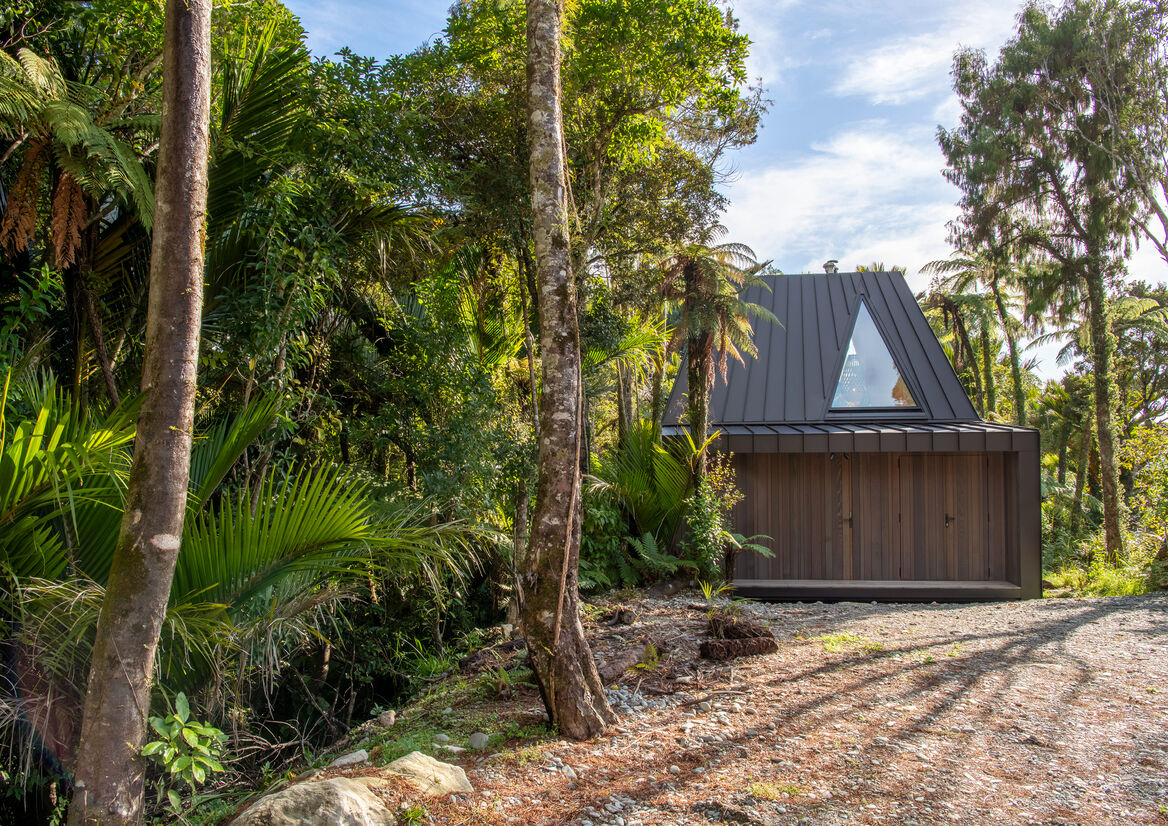
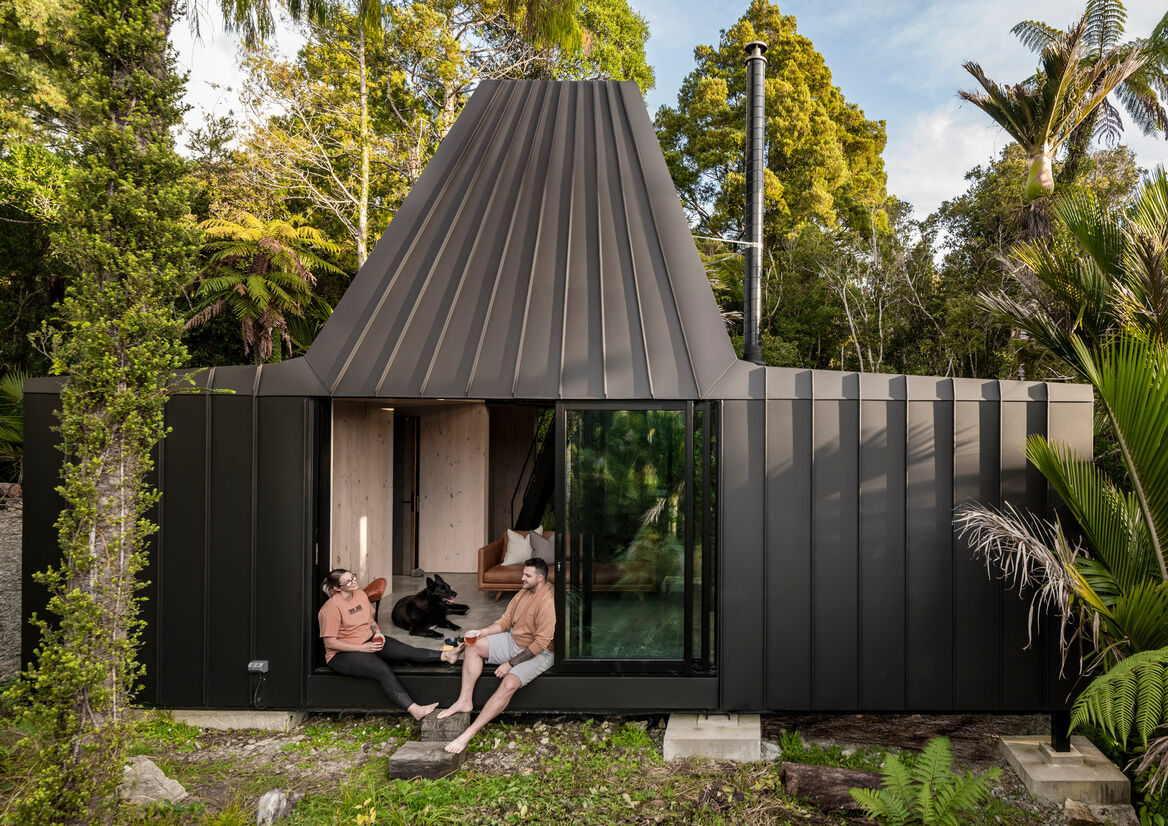
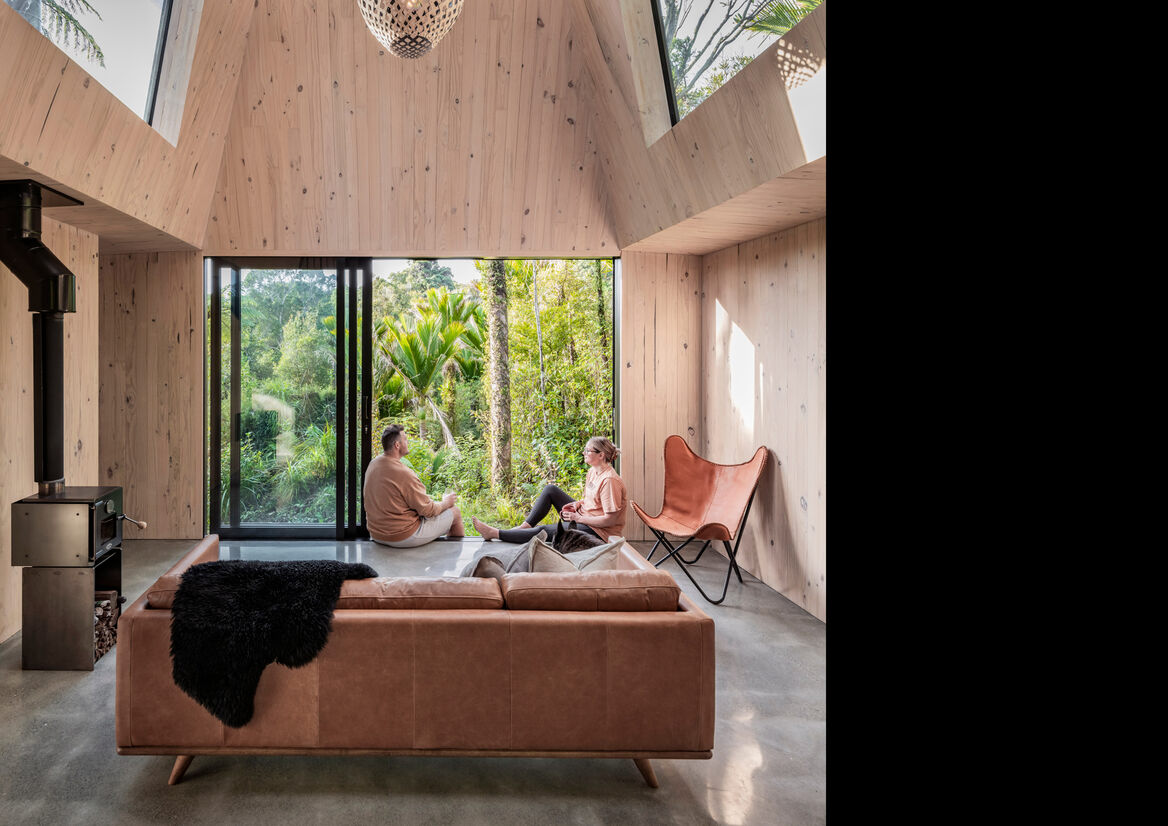
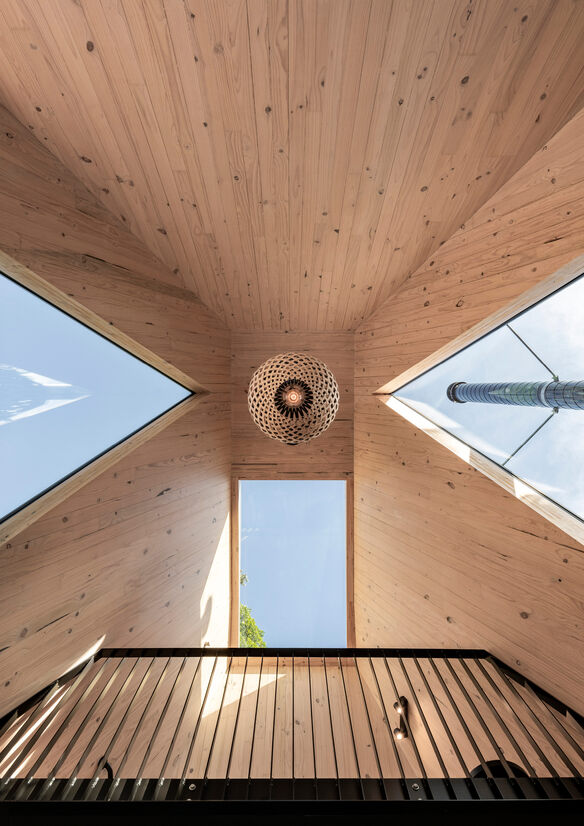
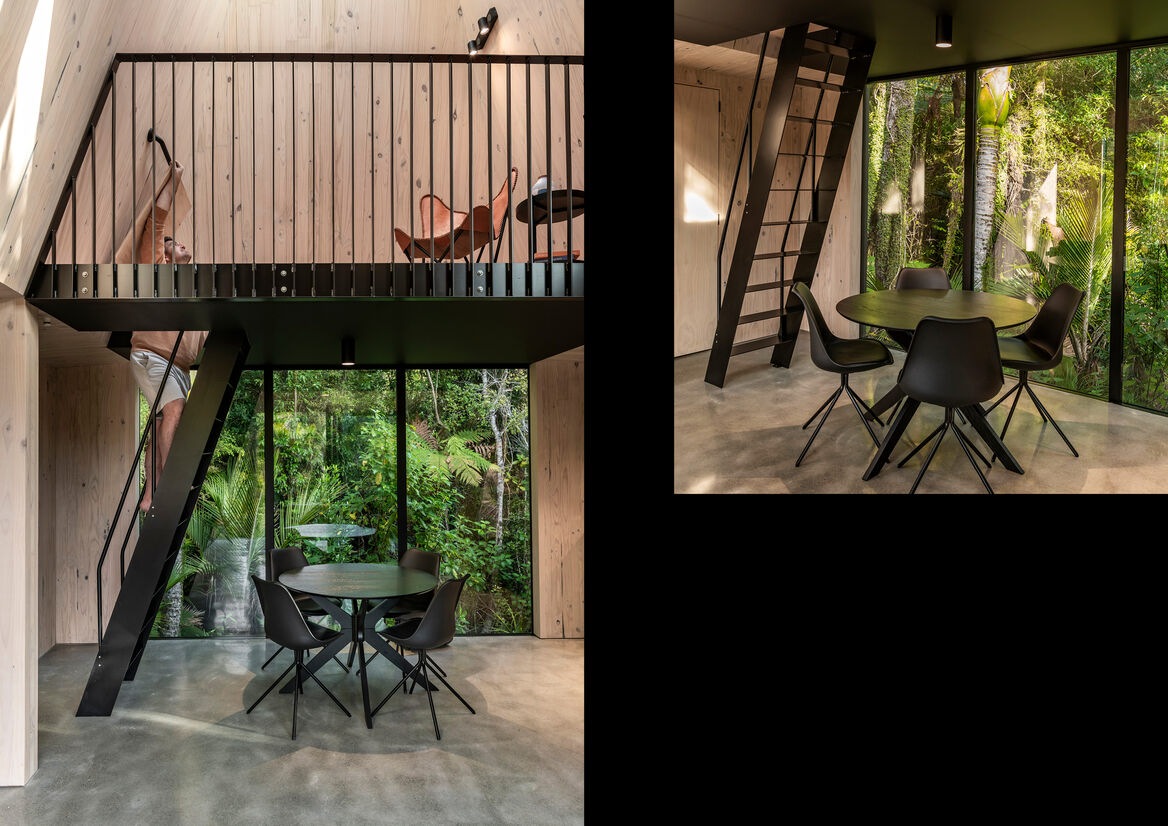
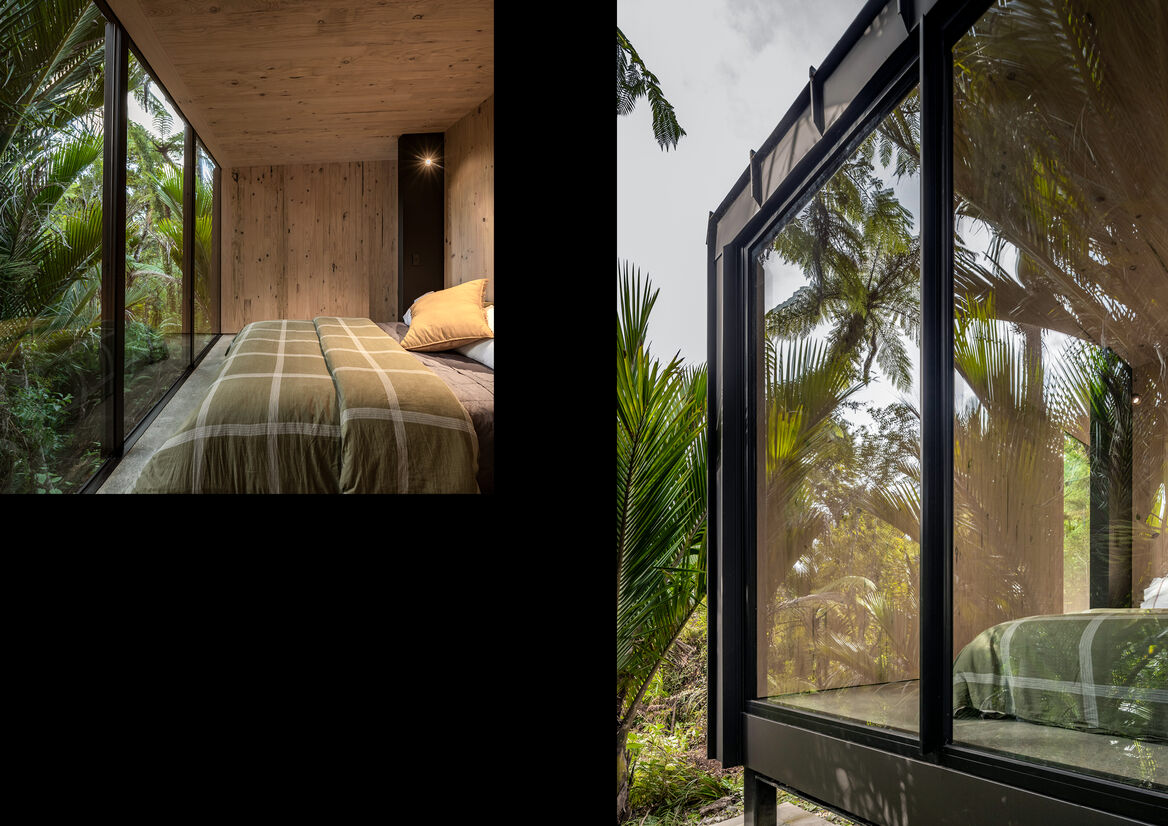
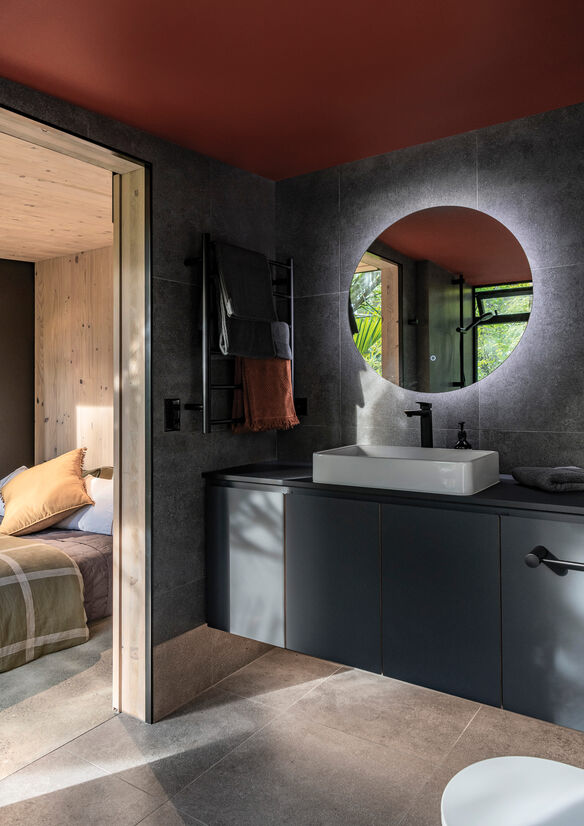
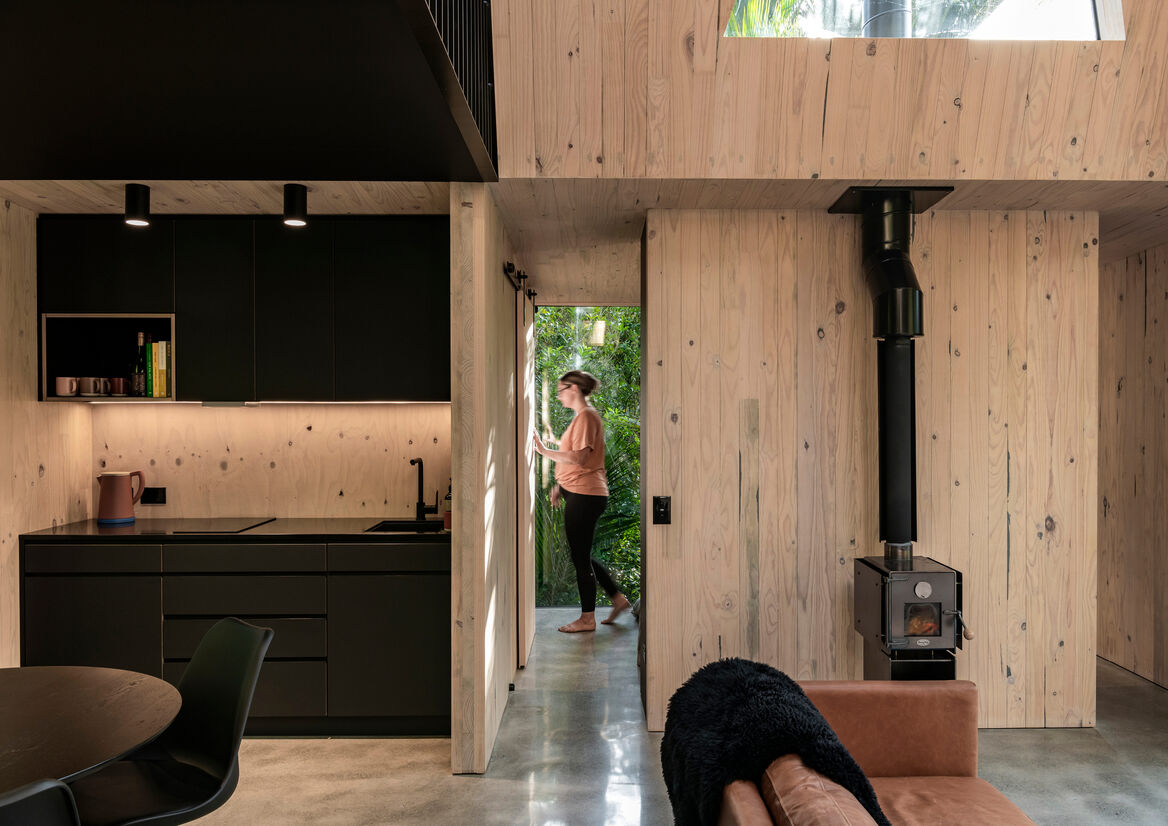
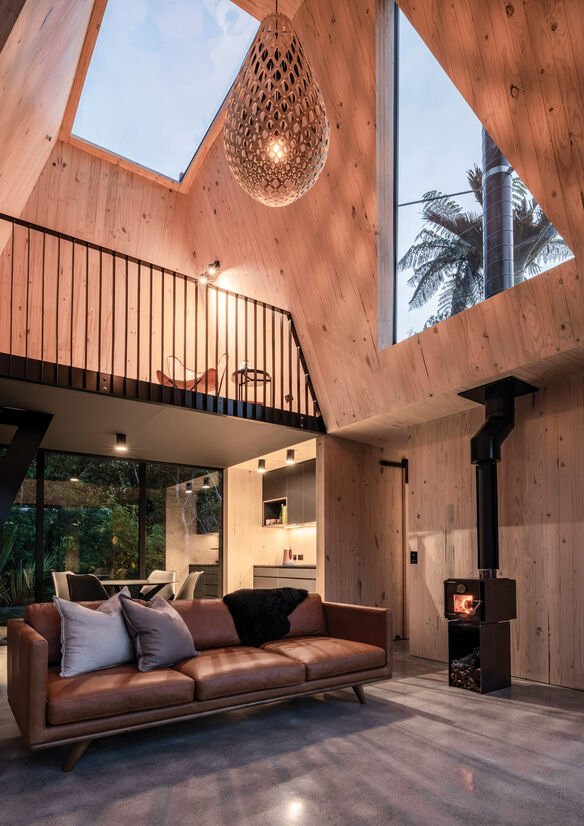
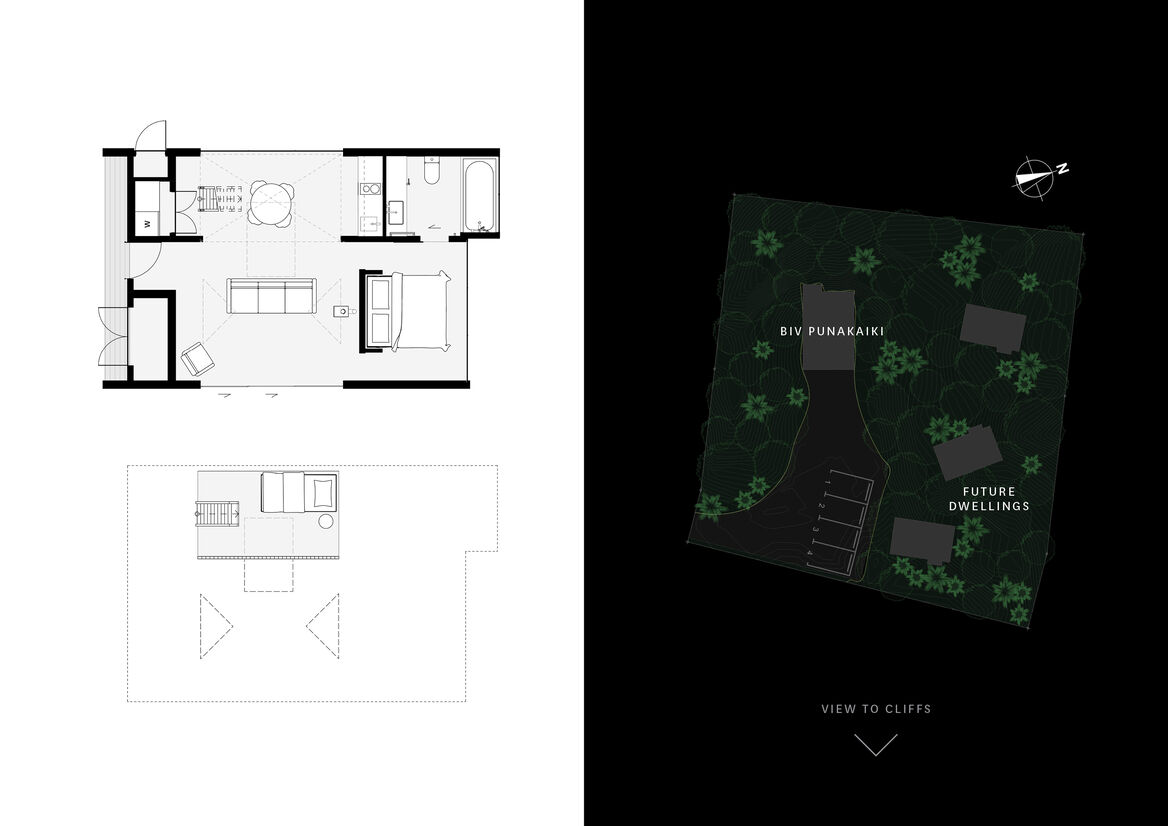
Description:
The first in a series of buildings, ‘Biv’ offers high end, short term accommodation for travellers on their West Coast journey. Nestled in the Punakaiki bush, the aesthetic concept was a reinterpretation of a historic gold miners hut, but with all the modern facilities to warmly welcome modern day travellers and encourage them to have a uniquely West Coast and New Zealand experience.
The form of the building took cues from many of the exterior chimneys repeated on historic gold miner huts. Internally, the sky facing skylight represents the top of the smokestack. The open plan layout and large amount of windows and glazing offer travellers an all-encompassing experience, while the balance of minimal but luxury facilities are just enough to keep the focus on simple living while still remaining comfortable and memorable.
Like its mining predecessors, this cabin was to have as minimal touch on the land as possible. A durable concrete floor suspended on only a few concrete piles with no formal landscaping promotes the aesthetic of simple living. The piles to bearer connections have an adjustable bracket to allow for future releveling, should the landslide it’s built on move.
A full timber interior (alongside the full steel exterior) was chosen to represent the historic miners hut aesthetic. But unlike an old hut, this building’s mass timber and highly insulated construction ensures it maintains a stable and comfortable internal temperature with no need for human input to remain comfortable. A small fire was installed for ambience, as no cabin in the bush is complete without one, and spaces are intentionally underlit to promote a relaxing environment at night, and draw the focus to the central fire and pendant light that mimics the playful shadows of the bush seen during the day.
All detailing was to be as minimalist as possible to blur the line between interior and exterior, therefore drawing guests further into their West Coast bush experience. Window and skylight placement was critical to ensure guests capture glimpses of the important views such as the cliff behind, overhanging trees above, and the night sky and bush in all directions.
The fully glazed walls capture large portions of bush creating many ‘instagrammable’ moments. The bush was kept as close to the cabin as possible to filter light and allow as much of the natural colours and shadows from the bush to be cast in the interior walls of the cabin. A mezzanine allows for extra accommodation if needed, or a place to simply relax, stargaze or watch the West Coast rain come down.
Along with low energy input, low embodied carbon while maintaining durability was an important factor in material selection, with mass timber construction in the form of cross laminated timber (CLT) offsetting the higher carbon of the more durable and high thermal mass concrete floor and corrosion resistant aluminium cladding. The embodied carbon on this building is calculated at 47tCO2, which is right on the NZ 2050 carbon budget for single residential units.
Judge's comments:
A playful yet finely crafted use of sustainable materials at a scale which often misses to measure its environmental impacts. The cabin is respectful of its surroundings with only taking what is needed. The minimal floorplate and detailing both reflect the design intent of remaining 'light', clean and respectful.
Efficient and iconic residential architecture that embodies a low impact approach to energy use and sustainability.
Celebrates the small with careful consideration of materials and precision.